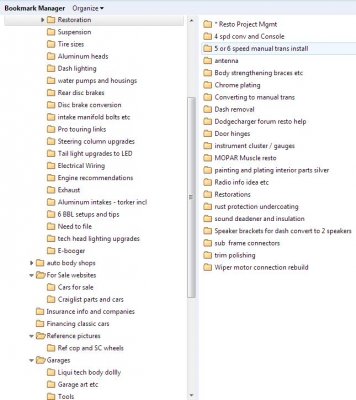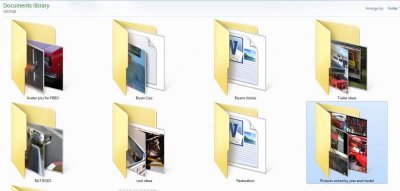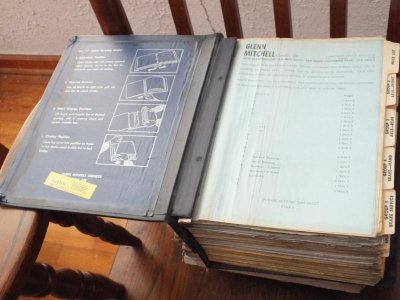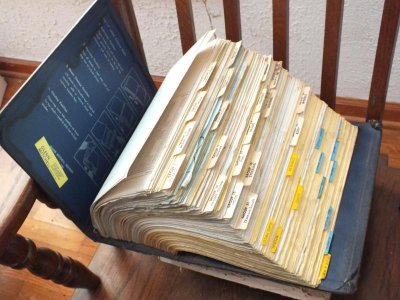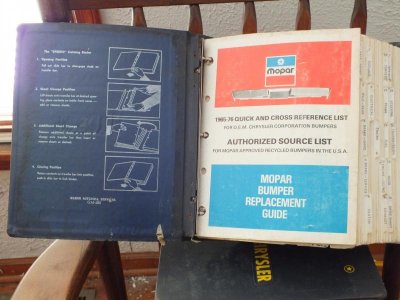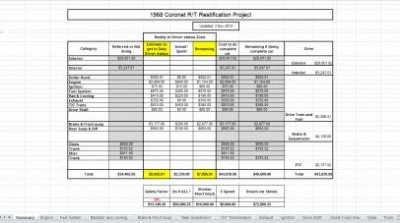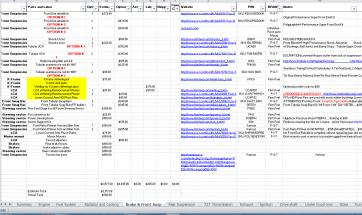- Local time
- 9:16 AM
- Joined
- Jan 1, 2013
- Messages
- 8,038
- Reaction score
- 3,465
- Location
- Mascoutah, Illinois
Well I've been busy following Budnicks advice and filling my (virtual) library and am ready to start my project management portion of the resto. I've been reading others restoration posts, researching and saving how to info, reference lists etc. I figure it's best to do this now so i'll have an idea of costs and who/what to use before i get started.
Wondering if some other **** retentive folks out there have already created/used an Excel spreadsheet or other Project management tool for their own project.
I would appreciate it if you could share said tool and or advice on the the following:
1. Planning the phases of the build
2. Keeping track of hours invested
3. Time phases of build
4. Keeping track of suppliers, vendors, local/internet vendors you have/are buying from
5. Part numbers
6. Cost paid for parts
7. Shipping costs, and other fees for dealing with particular vendors, and perhaps comments on how they met/did not meet expectations/things to watch out for etc.
8. Sequence of build
Appreciate any information and advice
I'm planning a 70 Roadrunner 383 (now 440) 4 speed Hardtop Restification. I've owned the car since 1981 / age 16. I'll only be using parts / options available in 70 RRs for interior and body (that are visible) but intend on stiffening chassis / suspension, suspension mods esp to front end with rear sway bar and pinion snubber being probably as far as that will go on the back end, braking mods (probably 4 wheel disc, but definitely front disc) etc. But the focus of this thread is on project management ideas and I would love to have someones PM tools and advice on that portion of this project and learn from their specific resto and what dealers are the best work with. I'll start another thread when I start or getting ready to start turning wrenches .
.
Wondering if some other **** retentive folks out there have already created/used an Excel spreadsheet or other Project management tool for their own project.
I would appreciate it if you could share said tool and or advice on the the following:
1. Planning the phases of the build
2. Keeping track of hours invested
3. Time phases of build
4. Keeping track of suppliers, vendors, local/internet vendors you have/are buying from
5. Part numbers
6. Cost paid for parts
7. Shipping costs, and other fees for dealing with particular vendors, and perhaps comments on how they met/did not meet expectations/things to watch out for etc.
8. Sequence of build
Appreciate any information and advice
I'm planning a 70 Roadrunner 383 (now 440) 4 speed Hardtop Restification. I've owned the car since 1981 / age 16. I'll only be using parts / options available in 70 RRs for interior and body (that are visible) but intend on stiffening chassis / suspension, suspension mods esp to front end with rear sway bar and pinion snubber being probably as far as that will go on the back end, braking mods (probably 4 wheel disc, but definitely front disc) etc. But the focus of this thread is on project management ideas and I would love to have someones PM tools and advice on that portion of this project and learn from their specific resto and what dealers are the best work with. I'll start another thread when I start or getting ready to start turning wrenches
Last edited:

